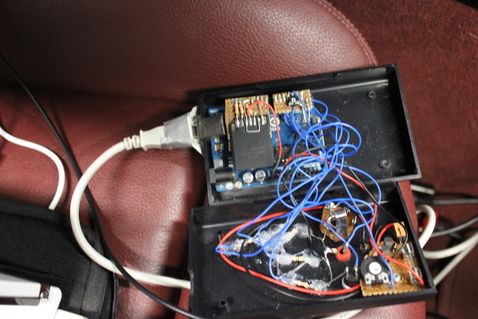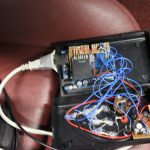
ARDUINO DETECTION RESPONSE TASK DRT
Source code is available in our GitHub repository: https://github.com/InstituteOfErgonomics/ArduinoDRT
Introduction
The Detection Response Task (DRT) is a method used to objectively obtain values for mental or cognitive workload of a task or task set (e.g. drive a vehicle while navigating through an infotainment system or speaking on the phone). The DRT is used as a part of the task set and performed at the same time as the other tasks.
To perform the DRT, persons must detect a stimulus (appearing randomly between a defined interval, typically between 3 and 5 seconds) and press a response button as quickly and accurately as possible to indicate they have perceived the stimulus. The stimulus can be visual or tactile: a red LED peripheral to the test subject (remote DRT) or mounted to his/her head (head mounted DRT), a vibrating motor placed on the participant’s shoulder (tactile DRT), respectively.
The DRT values (miss rate and reaction time of hits [RT]) are interpreted as the DRT measurement for the tasks under evaluation. The longer the RT, the higher the assumed cognitive workload resulting from task set performance. Miss rates reflect the degree to which the participant did not or was not able to detect the stimulus and or press the button.
The described hardware and software gathers these reaction data with an Arduino.
The DRT is currently being standardized (ISO/CD 17488), however, the values presented here do not necessarily reflect the “standardized” values or those under discussion by the DRT working group.




COMMENTS